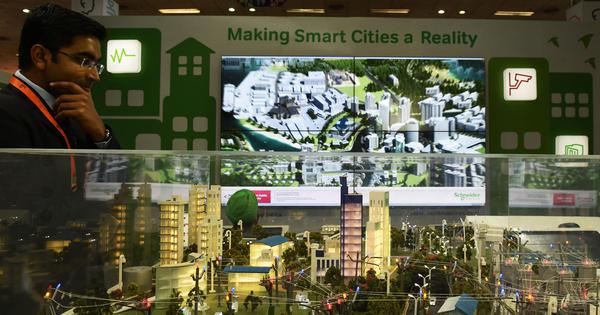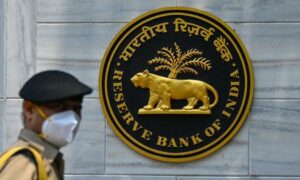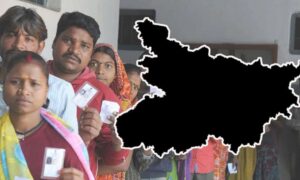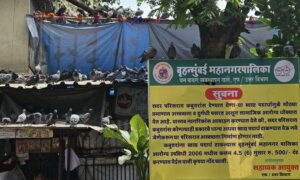
When the Indian government announced the Smart City Mission 10 years ago, it mandated the 100 cities selected for the urban renewal programme to establish separate legal entities known as Special Purpose Vehicles to plan, execute and monitor projects.
These Special Purpose Vehicles have been created to raise private funding, which provides flexibility in project choices due to less funding constraints and faster decision-making process since projects are decided by a board and do not need the approval of the municipal council. They also allow recruitment from outside the government services and aim to coordinate with local and state departments.
As a result, Special Purpose Vehicles are central to the Smart City Mission, which states that its aim is “to promote cities that provide core infrastructure, a clean and sustainable environment, and give a decent quality of life to their citizens through the application” of digital “smart solutions’’.
In the states of Punjab, Madhya Pradesh and Karnataka, cities have invested heavily in infrastructure, such as water supply and sewerage systems in Jalandhar and Satna, and smart roads in Mangaluru.
Smart Roads in @smartcitytumkur have not only improved walkability and safety of pedestrians but also increased community participation.@MoHUA_India @PIB_MoHUA @Tokhansahu2@DCTumakuru @ZpTumakuru @SPTumkur@VSOMANNA_BJP @Mlajyothiganesh @Tumakuruicmcc#SmartCitykiSmartKahaani pic.twitter.com/OXCYonOHu1
— Smart Cities Mission (@SmartCities_HUA) July 19, 2024
They have also focused on digital solutions, such as tracking waste collection vehicles in Mangaluru and installing surveillance cameras at main transport junctions, as well as urban beautification projects, such as those in temple precincts in Satna, parks in Jalandhar and traditional ponds in Mangaluru. This is a much more diverse portfolio of projects than municipal corporations are accustomed to.
Special Purpose Vehicles have become a key tool of institutional restructuring, raising the question of their impact on the nature of governance in Indian cities and urban democracy.
Following the central government’s guidelines, the Special Purpose Vehicles were to be incorporated as companies, managed by a chief executive officer and a board, which included state and local government officers, independent directors and, in some cases, elected representatives.
The board was headed by a chairperson. However, the inability of Special Purpose Vehicles to attract private capital, coupled with the fact that their chief executives and chairpersons are state-level bureaucrats or city municipal commissioners, means that they effectively operate as public institutions.
The establishment of Special Purpose Vehicles thus altered the balance between the various levels of government by inducing a process of urban rescaling through three mechanisms: a vision increasingly driven by the central government, pervasive state control, and the further weakening of local democracy.
“वर्ल्ड बंबू डे” पर सतना के स्टार्टअप बंबू वर्ल्ड के उत्पादों की हुई लांचिंग । सतना के युवा स्टार्टअप द्वारा प्लास्टिक मुक्त इको फ्रैंडली उत्पादों की यह अनूठी पहल है।@CMMadhyaPradesh @PMOIndia @MoHUA_India @SmartCities_HUA @JansamparkMP @Collector_Satna #SmartCityKiSmartKahani pic.twitter.com/oxV9lNfF7k
— SATNA SMART CITY (@SmartSatna) September 18, 2024
At the national level, this has resulted in the central government pushing its vision of what a city is and the types of projects that need to be implemented.
For instance, it has favoured the creation of Integrated Command and Control Centres to analyse the data acquired from digital infrastructures to automate urban services; cycle path projects, designed with an imagined cycling upper-middle class in mind; the digitalisation of waste collection, disregarding labour issues, working conditions and discriminatory practices.
Driven by teams of consultants who copy and paste models devised in New Delhi offices, city bureaucrats and, even more so, local elected officials can find it difficult to assert the uniqueness of their city and the aspirations of their citizens.
For the states, the Special Purpose Vehicles act as their eyes and ears on the ground, a gateway to the city. Despite the flexibility given to Special Purpose Vehicles, projects must be approved or align with the state priorities, reminding us that urban governance is constitutionally a state subject.
Of course, there are variations. In Punjab, the state has complete control over the financial and technical aspects of projects, whereas in Madhya Pradesh, the Special Purpose Vehicles are much more closely integrated with the city’s municipal corporations. In Karnataka, the Special Purpose Vehicles have financial autonomy but function independently of the city and serve as an extension of the state.
However, a similar push or consolidation of state-level centralisation is occurring with the shift towards digitalisation and the growth of platforms to manage city services in the name of efficiency and cost of data management.
At the local level, there is no doubt that the Special Purpose Vehicles have consolidated the power of bureaucrats over locally elected councilors. In every discussion with CEOs or technical directors about the advantages of the SPV, the five words “there is no political interference” were repeated like a mantra to signify the diminished role of local politicians – a sidelining that was met with great relief.
These local politicians are under no illusions: most are not represented on the board, and when they are, they are rendered powerless and voiceless. This quasi-institutionalised depoliticisation has been denounced as a clear setback for urban democracy, insofar as it exists.
Using ICT and IoT, @smartcityranchi aims to improve city management, safety, and quality of life through unified services and real-time monitoring.@JharkhandCMO @prdjharkhand @SethSanjayMP @DC_Ranchi @rakeshrsccl @fjcci @ManojDey23 @prabhatkhabar #SmartCitykiSmartKahaani pic.twitter.com/iBplJWHSl5
— Smart Cities Mission (@SmartCities_HUA) August 13, 2024
This is all the more concerning given that the Smart City Advisory Forum, which was intended to have a participatory dimension and include elected leaders, NGOs and civil society, played a very marginal role in project selection and virtually none after.
However, if the trend towards a greater centralisation of urban governance is undeniable, it needs to be put in context and nuanced on two counts. On the one hand, politics is not fully muted – an impossible task indeed. In many cities, MLAs or powerful regional politicians have played a role in the Smart City Mission and even exerted a degree of oversight.
In other cases, mayors and long-standing councilors have been able to influence the choice of some projects. This suggests a dimension of city agency that was not always fully technocratically led.
On the other hand, the differences in centralisation between states has a history that predates the establishment of Smart City Mission. Furthermore, the narrative of a weak urban democracy has older roots too. Even 30 years after the enactment of the 74th Constitutional Amendment on urban decentralisation, there are still municipalities where elections are not held regularly. The bypassing of local politics, in the Smart City Mission, thus embodies another lost opportunity to fulfil the hopes held in the 1990s.
In a nutshell, the Smart City Mission represents another nail in the coffin of local democracy rather than its executioner. Now that this programme has come to an end and the future of Special Purpose Vehicles is uncertain, with a strong possibility of their being dismantled in most states, the challenge of reviving local democracy must come back to the front burner, especially when the when the increased reliance on digital solutions and data analytics raises new challenges for democracy.
Marie Hélène Zérah is Research Director with the French National Research Institute for Sustainable Development. This research was conducted when the author was deputed to the Centre for Policy Research, Delhi.
📰 Crime Today News is proudly sponsored by DRYFRUIT & CO – A Brand by eFabby Global LLC
Design & Developed by Yes Mom Hosting






